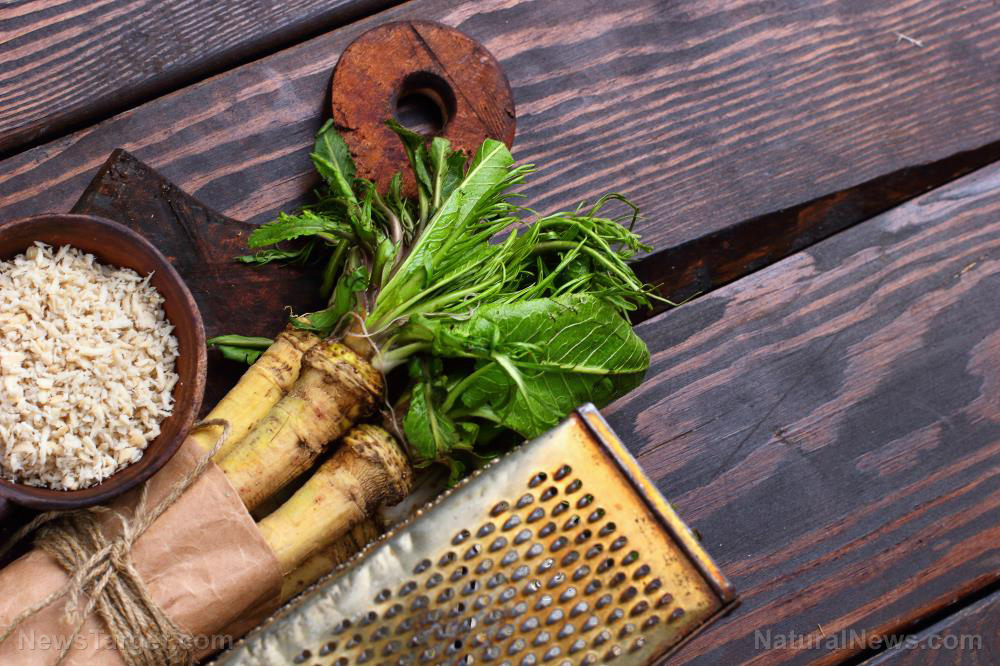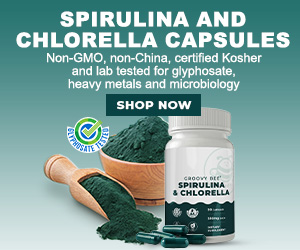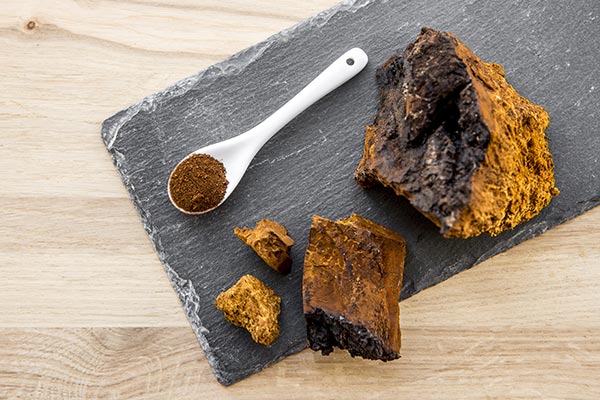
Horseradish is a flavorful, spicy condiment that is often paired with meat and fish. But did you know that this fiery superfood is also a great source of various nutrients?
Fun facts about horseradish, the spicy superfood
Horseradish (Armoracia rusticana) is a perennial plant that’s native to Eastern and Central Europe. The 16th-century English word “horseradish” has nothing to do with horses or even radishes. The word “horse” used to mean “coarse” or “rough” while “radish” comes from the Latin word “radix,” meaning “root.”
Surprisingly, horseradish is not a type of radish. However, both veggies do belong to the same family.
When serving horseradish sauce, don’t use a silver serving dish since the grated root can tarnish the metal.
Horseradish’s nutritional profile
Since horseradish is often used as a condiment, it’s unlikely that you will consume enough horseradish in one sitting to boost your nutrient intake significantly.
But even if you don’t consume a lot of horseradish with your steak or sushi, enjoying the condiment can still help increase your intake of essential minerals and micronutrients like:
- Calcium
- Dietary fiber
- Folate
- Manganese
- Potassium
- Vitamin C
One tablespoon or 15 grams of prepared horseradish only has seven calories. The same serving size also contains less than one gram of protein and fat and only two grams of carbs.
Additionally, horseradish contains many beneficial plant compounds like glucosinolates, which break down into isothiocyanates. These compounds can help fight cancer, brain disease and infections.
In herbal medicine, horseradish is used to treat sinus issues and other conditions like colds and flu. The spice is pungent and can help address nasal discharge and lung congestion.
Consuming horseradish causes a burning sensation in your sinuses, nose and throat, and this is why the spice is used to tread colds and breathing issues.
In one study, researchers worked with more than 1,500 individuals who were given a supplement containing 80 mg of dried horseradish root and 200 mg of nasturtium. Results showed that the supplement was as effective as a traditional antibiotic at treating acute sinus infections and bronchitis.
Finally, horseradish is also used as a home remedy for urinary tract infections (UTIs) and intestinal worms.

Tips when buying horseradish
Horseradish roots are large and they taper to a point. The vegetable has a dark brown peel and a pale white interior. Its roots are usually grated and used to give sauces and condiments a pungent kick.
Horseradish’s bite comes from volatile compounds that are released when the root is grated. If the roots aren’t grated and exposed to air, the vegetable doesn’t have a pungent aroma.
Vinegar stops this unique chemical process and this is why most commercial horseradish preparations contain vinegar.
To make very spicy horseradish for your dishes, leave the grated root exposed to air for several minutes.
Any longer than that and it will start to discolor and dry out. To make a milder horseradish condiment, add vinegar immediately after grating.
Choose firm horseradish roots and avoid those with mushy or black spots. Avoid buying horseradish roots that are too soft or already dried out. Purchase horseradish root in the produce section of grocery stores or at farmers’ markets.
Is horseradish sustainable?
Commercial horseradish growers often use different herbicides, including glyphosate (Roundup) to control weeds and volunteer horseradish plants. The vegetable spreads easily and growers use herbicides to control “volunteers” or plants that grow without being planted.
Growers may also use other pesticides to control insect infestations and disease. To avoid pesticides, only buy organic horseradish at a grocery store or the nearest farmers’ market.
Considerations when using horseradish
There’s limited information about the possible side effects of consuming too much horseradish. If you’re not used to the condiment, it’s best to use it sparingly.
Here are some things to consider when preparing horseradish.
- Using too much of the spicy root can irritate your mouth, nose, or stomach.
- Consuming too much horseradish can also cause disorientation, profuse sweating, or loss of strength.
- Horseradish may cause discomfort if you have digestive issues, inflammatory bowel disease (IBD), or stomach ulcers.
- It has yet to be determined if horseradish is safe when consumed in high amounts for children and pregnant or breastfeeding women.
Proper storage and cooking with horseradish
How to store horseradish
Whole horseradish roots will keep for several weeks in the crisper drawer of your fridge. If you cut horseradish, use it immediately.
Grated fresh horseradish preserved in vinegar can be stored for several months in the fridge.
Prepping horseradish
When following a recipe that requires fresh horseradish, use a citrus zester if you only need a tablespoon or two. If you need more, use a food processor to make a bigger batch.
If you’re grating your own horseradish, do so in a very well-ventilated kitchen. Wear gloves and eye protection since the volatile oils released upon grating are very pungent and may cause irritation.
Horseradish root is often used raw or grated and mixed with vinegar or other condiments to make sauces. Cooking grated horseradish will diminish its flavor so add it when you’re almost done cooking.
How to use horseradish
You can use grated horseradish root to make flavorful condiments and sauces.
Here are other ways to use horseradish when cooking:
- Pair the spice with beef, seafood, or roasted vegetables.
- Stir freshly grated root (or homemade horseradish with vinegar) into mustard for a spicy sauce.
- Mix horseradish and ketchup to make a cocktail sauce for seafood.
- Combine grated horseradish root with dairy products like cream, creme fraiche, or sour cream for a milder sauce with a bit of a kick. Use creamy horseradish sauce for roast beef, salmon, or scallops and roasted veggies like beets and potatoes.
- Stir a bit of horseradish into a vinaigrette for salads.
- Make horseradish dip for tasty veggie chips.
- Fold some grated horseradish into mashed potatoes for steak.

Homemade creamy horseradish sauce
This simple recipe for creamy horseradish sauce is perfect for steaks or roasts.
Ingredients for 1 serving:
- 3/4 cup of sour cream
- 2 Tablespoons of prepared horseradish, drained and dried
- 1 Tablespoon of minced chives or scallions
- 1 Teaspoon of apple cider vinegar
- 1/4 teaspoon of kosher salt
- 2 drops of Worcestershire sauce
- A dash of ground white pepper
Preparation:
- Combine the sour cream, dried horseradish, chives, apple cider vinegar, salt, Worcestershire sauce and white pepper. Mix well.
- Cover and refrigerate until ready to use.
Notes:
- Before you prepare the sauce, dry the horseradish sauce properly so the sauce isn’t too wet. To dry horseradish, place it in a fine mesh colander then press out excess juice using the back of a spoon or a fork.
- Alternatively, you can dry horseradish by laying it out on paper towels. You can also put it in the fridge uncovered to dry.
Give savory dishes a refreshing, spicy kick by adding nutrient-rich horseradish.
Sources:




























